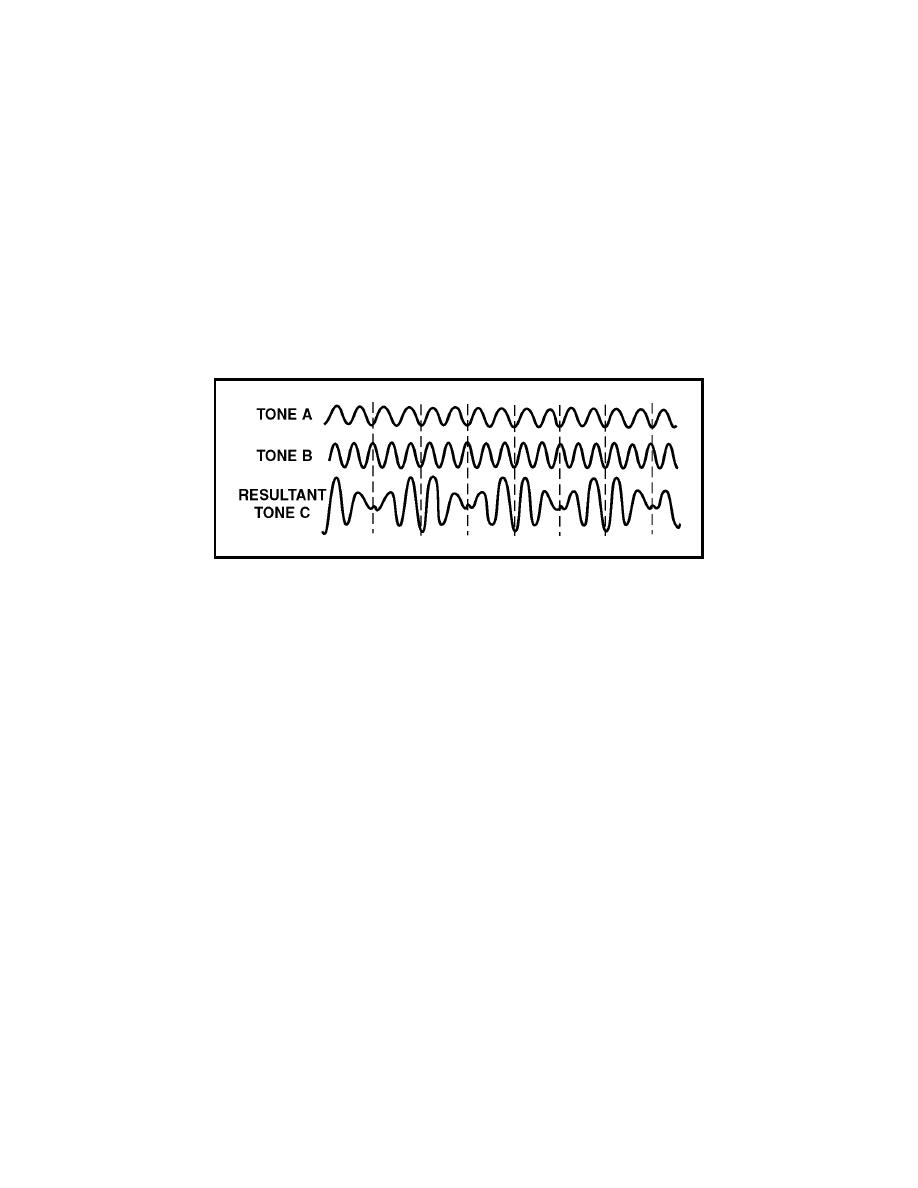
TC 9-64 _________________________________________________________________________
Sound Quality
1-64. Most sounds, including musical notes, are not pure tones. They are a
mixture of different frequencies (tones). A tuning fork, when struck, produces
a pure tone of a specific frequency. This pure tone is produced by regular
vibrations of the source (tines of the tuning fork). On the other hand, scraping
your fingernails across a blackboard creates only noise, because the
vibrations are irregular. Each individual pipe of a pipe organ is similar to a
tuning fork, and each pipe produces a tone of a specific frequency. But
sounding two or more pipes at the same time produces a complex waveform.
A tone that closely imitates any of the vowel sounds can be produced by
selecting the proper pipes and sounding them at the same time. Figure 1-15
illustrates the combining of two pure tones to make a complex wave.
Figure 1-15. Combination of Tones
1-65. The quality of a sound depends on the complexity of its sound waves,
such as the waves shown in tone C of figure 1-15. Almost all sounds (musical
and vocal included) have complicated (complex) waveforms. Tone A is a
simple wave of a specific frequency that can be produced by a tuning fork,
piano, organ, or other musical instrument. Tone B is also a simple wave but
at a different frequency. When the two tones are sounded together, the
complex waveform in tone C is produced. Note that tone C has the same
frequency as tone A with an increase in amplitude. The human ear could
easily distinguish between tones A and tone C because of the quality.
Therefore, we can say that quality distinguishes tones of like pitch and
loudness when sounded on different types of musical instruments. It also
distinguishes the voices of different persons.
VELOCITY OF TRANSMISSION
1-66. Sound waves travel through any medium to a velocity that is controlled
by the medium. Varying the frequency and intensity of the sound waves will
not affect the speed of propagation. The elasticity and density of a medium
are the two basic physical properties that govern the velocity of sound
through the medium.
1-67. Elasticity is the ability of a strained body to recover its shape after
deformation, as from a vibration or compression. The measure of elasticity of
a body is the force it exerts to return to its original shape.
1-68. The density of a medium or substance is the mass per unit volume of
the medium or substance. Raising the temperature of the medium (which
1-20



 Previous Page
Previous Page
